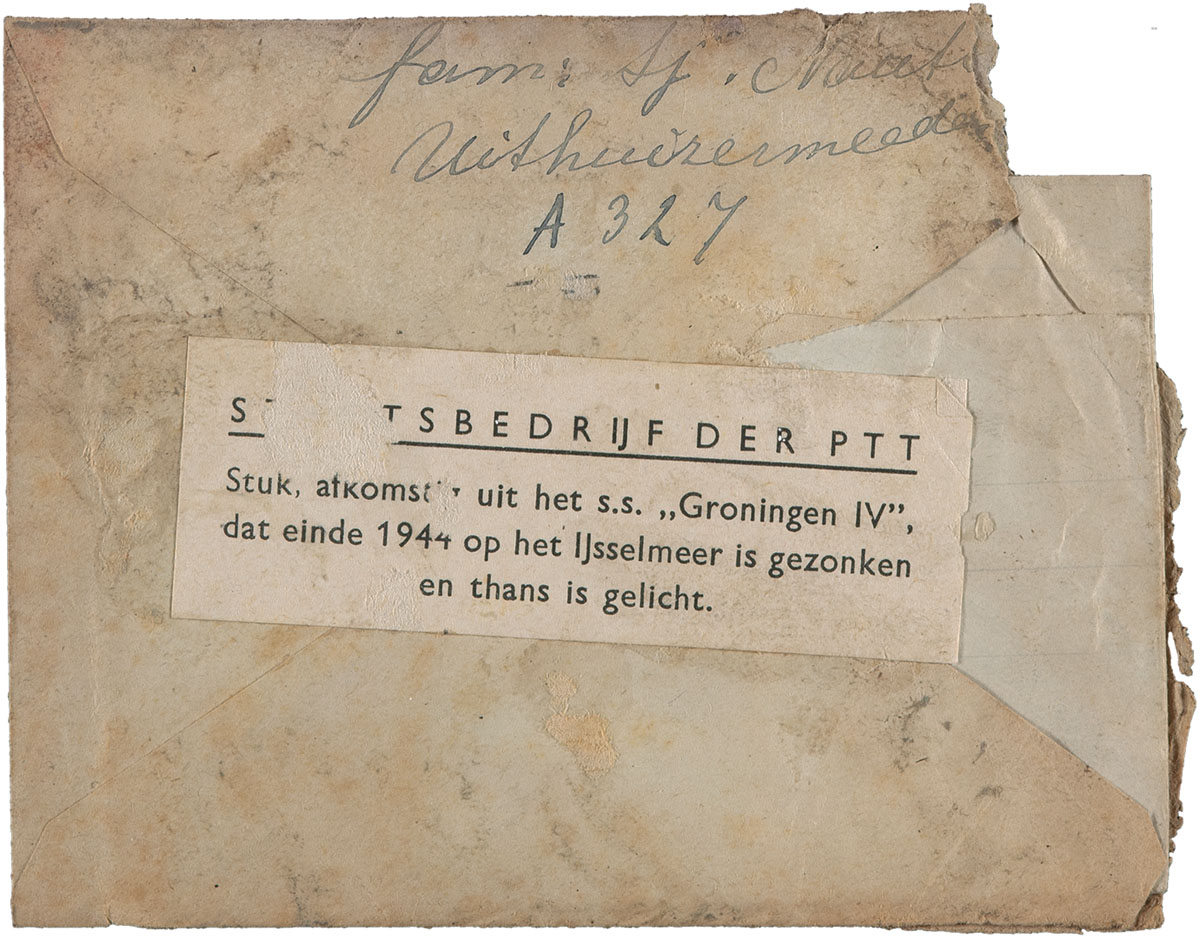The Groninger-Lemmer Steamboat Company was founded on July 9, 1870 by the brothers Jan, Geert and Reint Nieveen. Initially, its steam ships maintained a regular service between Groningen, Sneek, Lemmer and from there on to Amsterdam and carried people, cattle and goods.
Towards the late 1930’s, the company had 27 ships and maintained daily service from Groningen with Sneek, Lemmer, Amsterdam, Zaandam, Rotterdam and Den Haag. In addition, its ships sailed directly from Winschoten, Scheemda, Zuidbroek, Hoogezand-Sappemeer and Martenshoek to Amsterdam (see postcard shown in Figure 1).

The newly-built steam ship Groningen IV was added to the fleet in 1877 and is shown anchored in the harbor of Lemmer in Figure 2. The company continued to grow and regularly added ships to its fleet. In the 1920’s the company started to renew its fleet and in 1928 added the passenger ship Jan Nieveen (see Figure 3) which was considerably larger than the Groningen IV.

The evening of January 8, 1945, the Groningen IV departed from Lemmer towards Amsterdam under the command of Captain Arjen van der Meer. One of the crew members, 22 year old Tiemen Bouwhuis – a waiter, later reported that:

Newspapers reported that the collison between the Groningen IV and the larger Jan Nieveen had occurred near Urk. Initially, there was uncertainty about the number of dead, but eventually it was determined that there were thirteen victims. The disaster took place during the ‘Hunger Winter’ when the ferry service was frequently used by people from the west of The Netherlands to search for food in Friesland. In fact, all of the dead were from Amsterdam.

The wreck was raised on September 4, 1946 and brought to Enkhuizen. The remains of the dead were recovered and identified, and the ship was auctioned off for scrap (Figure 5).
A committee of the Shipping Council (“Raad van de Scheepvaart”) issued a verdict on September 7, 1946, immediately after the Groningen IV had been raised. On the basis of statements made by the captains and crew of the two ships involved it was found that the Groningen IV had sailed with uncovered lights, because the lamps were fed with gas oil, which does not burn brightly. The Jan Nieveen sailed with covered electrical lights. The two ships met between the buoy of the Enkhuizerzand and the Frisian light heading (nearly) opposite courses.

The Groningen IV sees at some point the green side lantern of the Jan Nieveen and steers one compass point (11¼ ͦ ) to port. The Jan Nieveen sees a fuzzy red light and deviates three compass points to starboard, resulting in a collision under an almost 90 degree angle. Neither ship had a look out on the prow, nor were there four crew members in the wheel house. Both captains shared blame for the disaster, with the captain of the Groningen IV carrying most of the blame because he altered course to port instead of starboard, thus causing the collision.

The Groningen IV had carried mail, most of which were packages with food that had perished by the time the ship had been raised. However, three small bags with mail and news-papers had been recovered, and the “Nieuwsblad van het Noorden” reported on January 14, 1947, that these items, after drying, had been delivered at last (Figure 6).

Figures 7 shows the front and back of one such (badly damaged) envelope in my collection. The front shows a postmark Bussum, December 21, 1946. The letter was ad-dressed to Miss Joustra, Sanatorium “Hoog-Blaricum”, Bus-sum. The address has been struck out and replaced by the handwritten “Hoofdvaart, Dedemsvaart (dorp [village]).” The back has a label from the PTT, stating that the piece is from the s.s. “Groningen IV” which sunk in the IJsselmeer at the end of 1944 and has now been raised. The original stamp has been soaked off and the departure cancel has been erased by the water. The intended recipient was no longer at the address on the envelope as the cover was forwarded to Dedemsvaart on December 21, 1946 according to the Bussum departure cancel.

Thus the label on the back of the cover is incorrect regarding the time of the sinking. Also, the punctuation is incorrect; the period after Groningen IV must be a comma. Interestingly, labels with the correct punctuation exist as shown in Figure 8.

The Amsterdam Children’s Sanatorium Hoog-Blaricum was built in 1911, and expanded and remodeled in 1921 and 1931. It is situated along the Crailoseweg in Huizen, just outside Bussum. The building still exists and serves as a school for physically-handicapped children and revalidation center “de Trappenberg.”

In a 2019 NPV auction a cover from the Groningen IV was sold. It was dated 31 December 1944 and sent from Uithuizermeeden in the north of Groningen province. Apparently the letter was still in the envelope, because the auction description states the letter was about the Germans and difficulties because of the war.
Here is the cover:

Ik heb ook een enveloppe met inhoud. Ik zoek eigenlijk een mooie bestemming, maar kan op internet geen museum oid vinden waar dit een goede plek zou kunnen krijgen. Wie weet iemand hier?